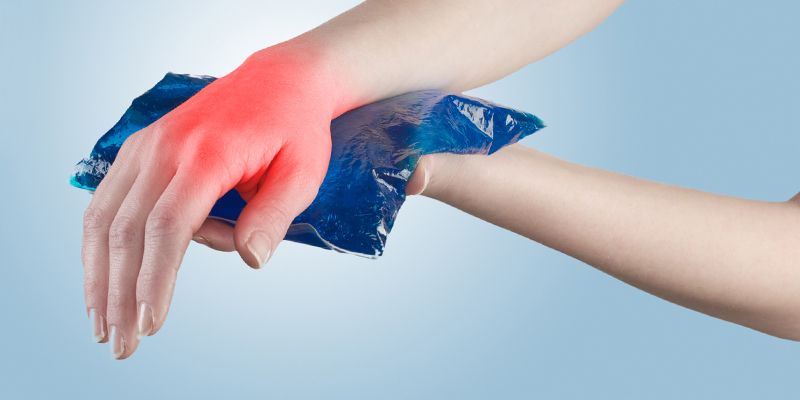Since cold weather, snow and ice may be a common cause of flair ups of pain or brand new injuries this time of year, it may be tempting to grab a heating pad or hot compress for some relief and relaxation.
Not so fast! Heat and ice treatments for pain relief are not “one size fits all” solutions for just any ache, bump or bruise.Whether you should soothe your pain with heat or ice depends on the nature of your current condition. Did you just twist your ankle recently, or have you been struggling with arthritis for a long time? Just as these types of pain will result in different symptoms, you should treat them with heat or ice according to the situation, not just one at random or a combination of both!

Choosing whether to treat pain with heat or ice is often a guessing game or just a matter of preference for one over the other for many of us.
However, you cannot treat yourself effectively if you don’t know which methods are recommended for your specific condition. As a general rule, heat should be used to relieve the pain associated with chronic conditions such as arthritis, fibromyalgia, muscle spasms and back and neck pain. It should also be used for injuries that are a day or more old. Heat is effective for these conditions because it helps to encourage blood flow in overworked muscles where lactic acid has accumulated. Heat also helps this lactic acid to flow away from the area and reverse damage that oxygen deprivation causes to tired and achy muscles. You can use local heat, or heat that is applied directly to the affected area, in the form of heating pads, hot water bottles and hot compresses. You can also take a hot bath or relax in a hot sauna to raise your body temperature.
Fresh injuries should be treated with ice. This is known as cryotherapy, and is effective for reducing the swelling and redness associated with newly damaged tissue or muscles.
The numbness created by ice brings quick and refreshing relief for inflammation and sensitivity because it slows down blood flow to help prevent or reduce the amount of the fluid that can build up in freshly torn tissue, for example. Unlike with heat, ice should only be applied locally. You can use an ice pack, cold compress, ice cubes in a plastic bag, or yes, even a bag of frozen veggies!
When using heat or cold locally, make sure that your ice or source of heat does not touch your skin directly; wrap ice packs, bags of ice cubes or heating pads in a towel before placing it on the affected area. In all cases, do not use heat or ice in excess.
Too much cold can cause tissue damage, while too much heat can cause burns, or even dehydration if you are using systemic heat therapy. A good rule of thumb is to apply heat for about 15-20 minutes and ice locally for ten minutes. You can use heat or ice several times throughout the day as needed.
Whenever you use heat or ice to soothe aches and pains, this only provides a temporary fix.
Heat and ice cannot permanently treat or reverse the underlying causes of chronic pain, especially various forms of arthritis and fibromyalgia, as well as damage caused by new injuries.
Also, you may find that you cannot tolerate the kind of heat or ice therapy that is typically most appropriate for your situation. A Rebalance therapist can pinpoint and treat the true sources of your pain for more long-lasting results and recommend the best methods of heating things up or cooling them down when it comes to pain relief!
















